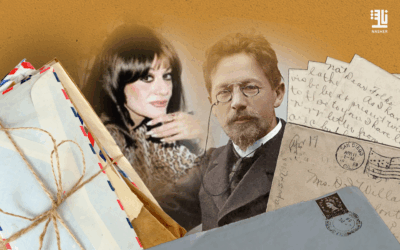J.R.R. Tolkien a linguist, scholar and author of “The Lord of the Rings,” died in Bournemouth, England at the age of 81 years old on September 2, 1973, leaving three sons and a daughter.
Professor of Anglo-Saxon at Oxford University, a philologist, and a self-described “hobbit,” J.R.R. Tolkien created two of the best-loved stories of the 20th century, “The Hobbit” and “The Lord of the Rings”.
John Ronald Reuel Tolkien was born on January 3, 1892, in Bloemfontein, South Africa, to English parents. At the age of three his mother brought him and his younger brother, Hilary, back to England. Tolkien’s father died soon afterwards in South Africa, so the family stayed in England and by the summer of 1896 his mother found them a home in the hamlet of Sarehole, just outside the city Birmingham. When he was 12, Tolkien’s mother died, and he and his brother were put under the care of a Catholic priest. They lived with aunts and in boarding homes thereafter.
By the time Tolkien had completed his degree at Oxford in 1915, World War I had erupted across Europe. Tolkien had to join the army, but he did not see active duty for months. In this period he wrote the poem ‘Gobin Feet’ which got published in ‘Oxford Poetry 1915’. When he learned that he would be shipped out in March 1916, he married his longtime friend Edith Bratt, the girl the poem was written for.
The Hobbit, the unexpected bestseller and cult novel, was never intended for publication. It came out after marking exam scripts. A student had left a blank page in the answer booklet. Tolkien wrote on the page, “In a hole in the ground there lived a hobbit.” He then set about researching what a hobbit was and why he lived in a hole. After this he used the information he found to tell stories to his four children. They went down so well that they were shared with friends and soon found their way into the hands of Susan Dagnall, an employee of the publishing firm George Allen and Unwin. She asked Tolkien to complete the story for publication in a book.
Tolkien submitted his earlier writings known collectively as the Silmarillion. This work comprises of five parts, Ainulindalë, about the creation of Eä, the ‘World that is’. The second part Valaquenta, which describes the supernatural powers of Eä. The third, Quenta Silmarillion, tells the history of the events before the ‘First Age’ and the fourth part, Akaallabêth mentions the downfall of Numenor during the Second Age. The fifth and final part, Of the Rings of Power and the Third Age, sets the scene for the Lord of the Rings.
The feedback from these was less favourable and it was considered too high a risk to spend the money that was required publishing the works. Instead Unwin asked for a sequel to The Hobbit. By 1949, twelve years after starting them, he had finished the draft copy and completed his tales. However a dispute with Unwin led Tolkien to offer the book to the competitor Collins. Their demand that the Lord of the Rings should be dramatically cut led him to return to Unwin and in 1952 the book was published in three volumes not only due to paper shortages but also to keep down the cost of the book. The three volumes, known now the world over, are The Fellowship of the Ring (Books 1 and 2), The Two Towers (Books 3 and 4) and The Return of the King (Books 5 and 6). They have sold over one hundred and fifty million copies and catapulted Tolkien to be one of the world’s best known authors.
In 1924 he was appointed to the Rawlinson and Bosworth Professorship of Anglo-Saxon at Oxford and enjoyed the life of a don. His own academic writings and life were not remarkable but he did write influential pieces on Beowulf.
He stayed here until his retirement in 1959 although he did change to the Merton Professorship of English Language and Literature in 1945. During World War Two he was offered the opportunity to serve as a code breaker in the cryptographic department of the Foreign Office. He accepted and went for training but was told his services would not be required.
On retirement He and Edith moved to Bournemouth and lived happily by the sea until her death in November 1971. He then returned to Oxford and was given rooms in Merton College where he stayed until his death, they are both buried in the Catholic section of the Wolvercote Cemetery.






